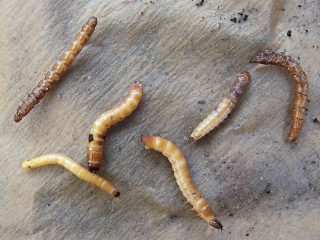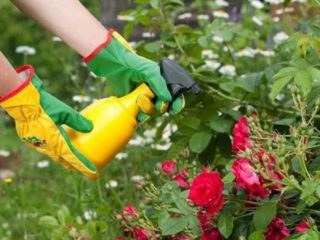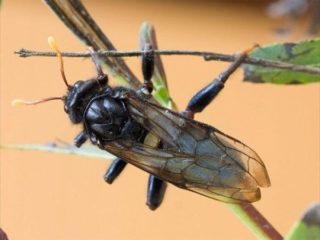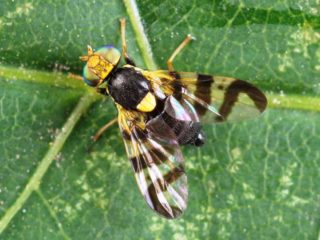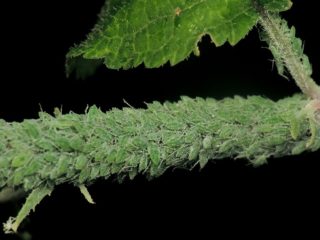Content
The instructions for use of Nitrofen contain a description of the dosage and consumption rates for the treatment of fruit trees and shrubs. In general, it is necessary to prepare a solution of low concentration (2-3%) and water the soil with it in spring or autumn. This helps protect crops from weeds, insects and various diseases.
Description of the drug Nitrofen
Nitrofen is a complex action drug that has several properties at once:
- fungicide (protection of plants from fungal diseases);
- insecticide (protection against insect pests);
- herbicide (weed control).
Therefore, in the instructions for use, Nitrofen is called an insectofungicide. It is used to protect fruit and berry crops, including:
- raspberries;
- strawberries;
- Strawberry;
- currant;
- peach;
- gooseberry;
- pear;
- grapes;
- Apple tree;
- plum.
The name of the drug is often found in 2 types - "Nitrofen" and "Nitrafen". Since it contains the products of nitriding reactions, the names of which begin with the root "nitro", it is more correct to say "Nitrofen". However, in any case, you need to understand that we are talking about the same tool.
Composition of Nitrofen
The drug is produced by nitration of phenols extracted from coal tar (they are treated with concentrated nitric acid HNO3).
Nitrofen contains several active ingredients:
- Alkylphenols (organic derivatives of phenols): 64-74%.
- Water: 26-36%.
- Oxyethylated alkyl phenols (OP-7 or OP-10): the remaining proportion (up to 3%).
Forms of issue
Release form - a thick mass of dark brown shade with a paste consistency. Differs in a specific chemical odor. The drug Nitrofen is readily soluble in water, as well as in alkalis and ethers (organic low-molecular compounds in a liquid state). Therefore, it can be dissolved even in cold water and treated plants at any time.
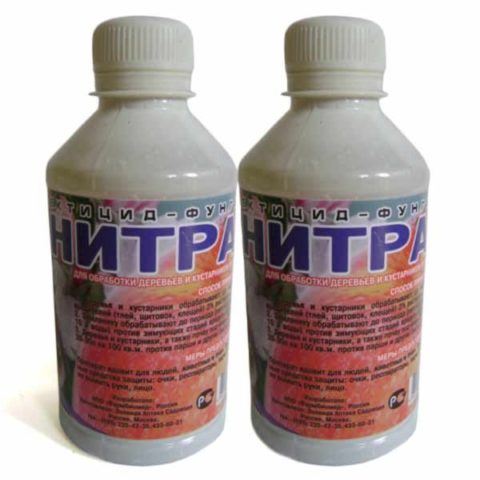
Nitrofen is sold in plastic bottles of different sizes.
Operating principle
Alkylphenols, which are part of the Nitrofen preparation, act as antioxidants and plant growth stimulants. They prevent the oxidation of cells by free radicals, block dangerous processes of chain reactions in plant tissues. Thanks to this, the green mass multiplies faster, increases resistance to various diseases, as well as to adverse weather conditions. Therefore, plants develop better and compete more successfully with weeds.
Oxyethylated alkyl phenols (OP) possess the properties of surfactants. They adhere well to the surface, they remain for a long time both on plants and in the soil. This explains the long-term effect of the drug Nitrofen. It is enough to carry out two treatments per season - in early spring and in mid-autumn.
What diseases and pests are used for
The drug Nitrofen helps to successfully protect fruit and berry crops from common diseases, including:
- scab;
- spotting;
- septoria;
- anthracnose;
- powdery mildew;
- downy mildew (mildew);
- curliness.
Also, the tool helps to cope with various pests:
- aphid;
- caterpillars of different types;
- scabbards;
- ticks;
- leaf rollers;
- honeycloths.
How to use Nitrofen for spraying the garden
Nitrofen is used for spraying trees, shrubs, as well as berries in the beds (strawberries, strawberries). The standard dosage is 2-3% solution, i.e. 200-300 ml of the composition is dissolved in 10 l (standard bucket) of water. In some cases (strong insect infestation), the concentration is increased by 3-5 times.
When to treat a garden with Nitrofen
According to the instructions, Nitrofen is used to spray the garden during the following periods:
- In early spring (before buds begin to bloom).
- In the middle of autumn (after the leaves have fallen off).
The use of the drug in late spring, summer and early autumn is undesirable, since the drops can burn the leaves, stems and flowers of plants. Therefore, it is better to use it only during periods when the weather is relatively cool and the daylight hours are short.
How to breed Nitrofen
Treatment with Nitrofen in spring and autumn is carried out according to the general rules. To obtain a working solution, you must:
- Measure the required mass depending on the concentration and the total volume of the solution.
- Dissolve in a little water and stir thoroughly.
- Bring to volume and shake well.
- Transfer the liquid to a convenient container for watering or spraying.
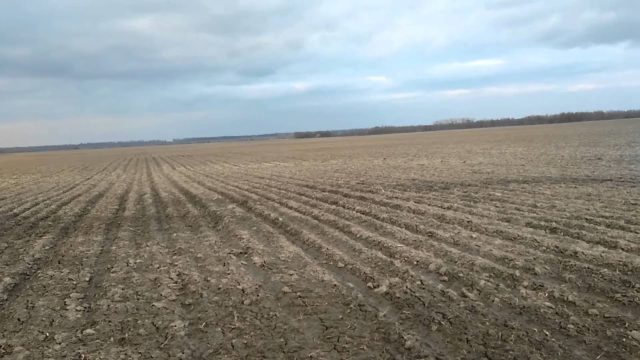
Treatment with Nitrofen is carried out in early spring or in mid-autumn.
Nitrofen treatment rules
The procedure is best performed in calm and dry, cloudy weather. In the reviews, summer residents and farmers say that Nitrofen should be used for spraying with caution. Even spilling the solution onto your fingertips can cause a slight burn. Moreover, it is necessary to exclude splashing drops and getting them into the eyes, nose, other organs and parts of the body.
The remains of the drug must not be discharged into the sewer. Therefore, it is better to prepare a solution in such a volume that it will be completely consumed at a time.
Instructions for the use of Nitrofen for fruit trees
Fruit trees (including apples of all varieties, peaches, pears) are processed in accordance with the instructions for use of the Nitrofen preparation. Use a 3% solution, prepare several buckets. For processing one adult tree, it is necessary to spend from 10 to 30 liters of water. Watered under the root, as well as the trunk circle. For young trees, 1 bucket (10 l) is enough, for seedlings - half a bucket (5 l).
Instructions for the use of Nitrofen for grapes
Grape processing with Nitrofen is carried out with a 2% solution. Consumption is 2.0-2.5 liters per 10 m2 landings. You can also use a 3% solution, the consumption is the same. Processing is carried out in early spring 1 or 2 times. Watering twice is necessary in cases where a large invasion of insects was observed on the eve of the summer.
Application on other berry crops
The drug is also used for processing other berries:
- raspberries;
- Strawberry;
- strawberries;
- currants of all varieties;
- gooseberry.
Spraying raspberries and other berries with Nitrofen is carried out in early spring. The concentration of the solution is 2-3%, the flow rate is from 1.5 to 2.5 liters for every 10 m2... In this case, it is necessary not only to water the soil, but also to spray the plantings themselves.
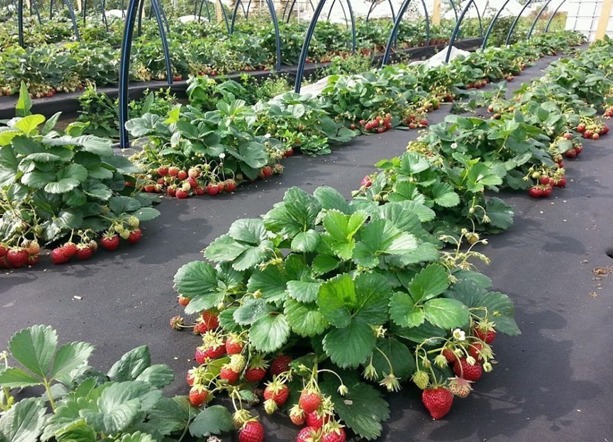
For every 10 m², 1.5 to 2.5 liters of Nitrofen solution are consumed
The use of the drug in the garden
The instructions for use do not indicate that Nitrofen can be used to treat the soil in the garden, however, some farmers and summer residents in the reviews suggest using the drug for these purposes (mainly for weed control).
In early spring, the soil is watered with a solution of standard concentration of 3%. Consumption - 1 bucket per 50 m2 or 20 l per 100 m2 (for 1 hundred square meters). Watering once helps prevent the growth of weeds - rape, woodlice and others.
Advantages and disadvantages
Judging by the reviews, Nitrofen for spraying has several advantages:
- Effective prevention and control not only against diseases, but also against insects and weeds.
- Long-term exposure: it is enough to carry out two treatments per season.
- Low consumption rates, economy.
- Affordability, especially in comparison with foreign counterparts.
- Compatible with most other drugs.
- Versatility: can be used for fruit and berry crops, as well as for soil cultivation in the field or in the garden.
But there are also disadvantages. The most serious is the high hazard of the substance. When processing, you must carefully follow the precautions. It is undesirable to contact pregnant and lactating women, children and people with poor health with the solution.
Compatibility of Nitrofen with other drugs
The product is compatible with most other fungicides, herbicides and insecticides. Therefore, it can be used in tank mixes or separate processing with a break of several days. The product dissolves well in alkaline and aqueous solutions, does not precipitate.
Safety measures during processing with Nitrofen
The drug belongs to the 2nd hazard class - it is a highly hazardous substance. Therefore, the processing is carried out using gloves, special clothing. It is advisable to wear a mask to prevent drops from getting into the eyes and nasopharynx (the product has a specific smell).
During processing, no strangers, including children, as well as pets, should be allowed on the site. Smoking, eating and drinking is excluded. In case of unforeseen situations, it is necessary to take urgent measures of assistance:
- If the liquid gets on a part of the body, it is washed with soap and water.
- If the Nitrofen solution gets into the eyes, they are washed for 5-10 minutes under moderate water pressure.
- If by mistake the liquid got inside, you need to take 3-5 tablets of activated carbon and drink them with plenty of water.

During processing, be sure to wear a mask, goggles and gloves
In the event of various symptoms (itching, burning, burns, pain in the eyes, heaviness in the abdomen, and others), you should immediately seek medical help.
Back in 1988, the countries of the European Union introduced a legislative ban on the use of Nitrofen for processing fruit trees, berries, vegetables and watering the soil in order to destroy weeds. Studies have been carried out that have shown that active substances with prolonged contact can cause the development of oncological diseases. Therefore, the drug was recognized as a carcinogen.
What can replace Nitrofen
Nitrofen can be replaced by analogs - drugs of similar action:
- Oleocobrite is a product derived from organic copper salt (naphthenate) and petroleum oil. Effectively copes with various diseases and pests, including helping with spotting and scab, destroys aphids, ticks and copperheads.
- Copper sulfate is a long-proven remedy that helps well in the prevention and treatment of various types of spotting, septoria and other fungal infections.
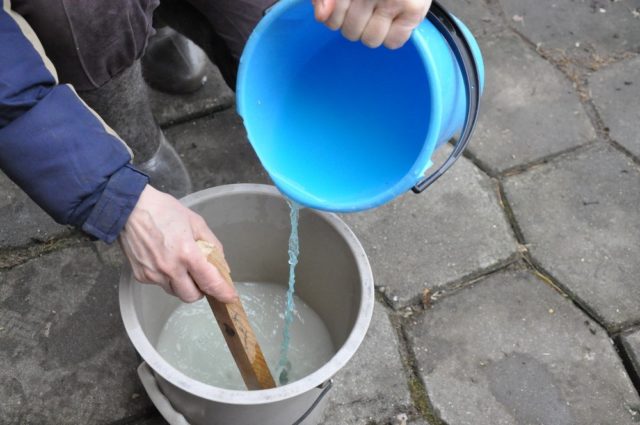
Copper sulfate is less toxic, but copper, as a heavy metal, can accumulate in the soil for years
Conclusion
Instructions for use of Nitrofen describe the composition, dosage and rules for using the drug. It is very important not to violate the established norms and processing times. Watering is carried out in early spring and mid-autumn. Otherwise, the liquid can burn the tissues of the plants, which will affect the yield.
